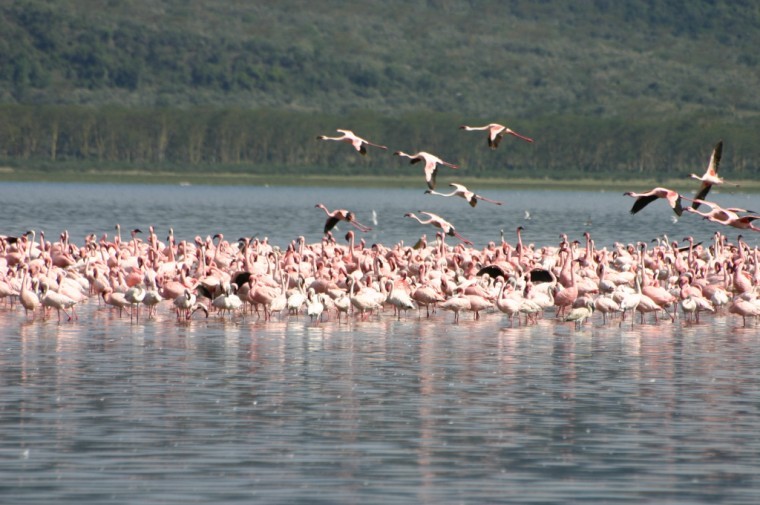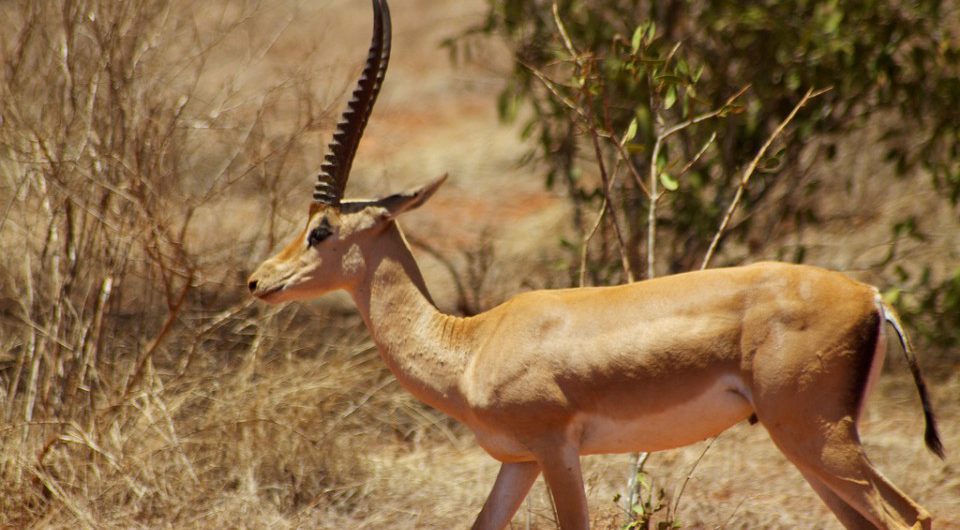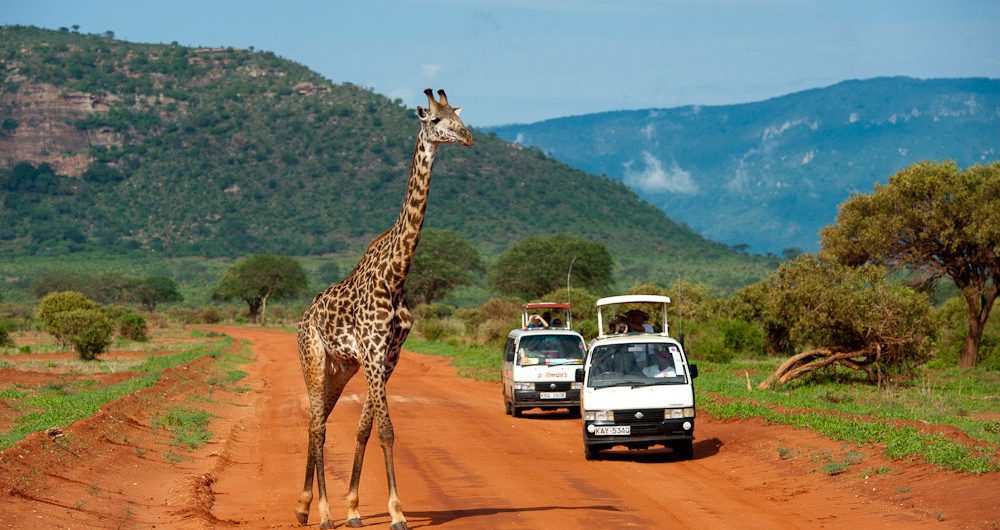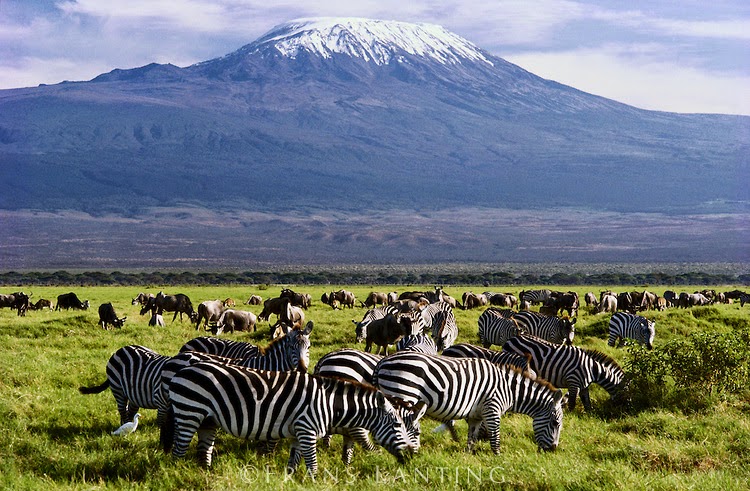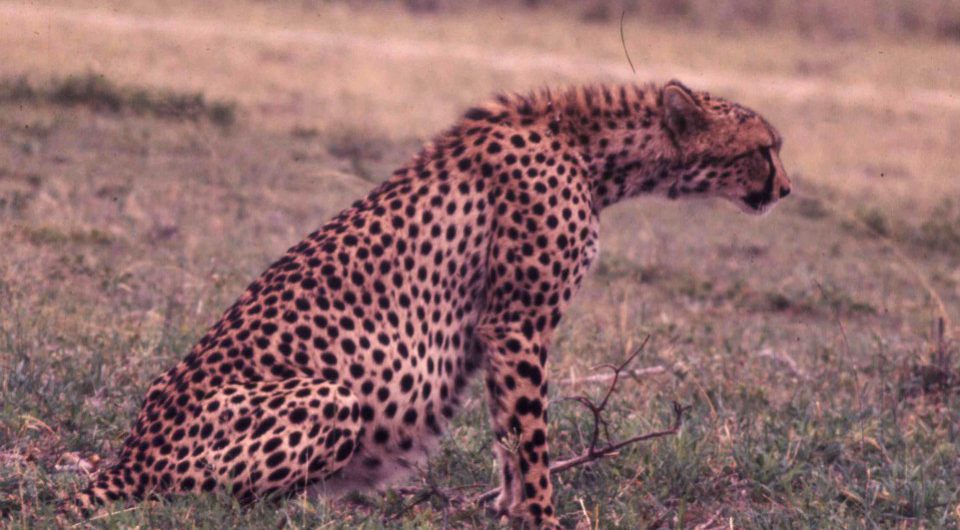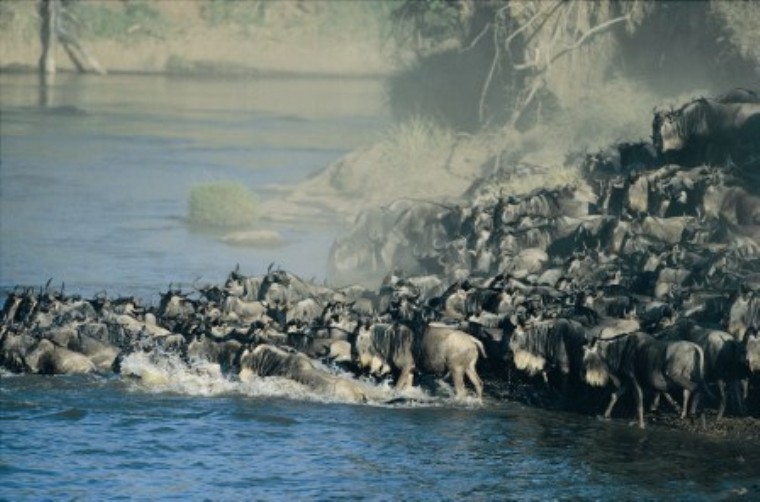Dubbed “the birdwatchers’ Paradise” the lake inside the park is home to a spectacular variety of terrestrial birds numbering nearly 450 species, including the migratory ones that do not breed here. The area consists of Makalia Falls and Baboon Cliff which gives one a bird’s eye-view of the whole park including the nearby Nakuru town. The park itself is home to wildlife including the highly elusive and endangered big and meek plains white rhino and its smaller but aggressive forest cousin black rhino, rare Rothschild giraffe with its white shanks (like football socks, unlike its common cousins along Naivasha highway, Mara, Amboseli and Nairobi), the occasional leopard and various small and big antelopes. The lake itself is a haven for both the Greater and Lesser flamingo that provide a “pink carpet” over its stretch when viewed from the cliff or from the shores. Other birds include egret, kingfisher and the conspicuously sized giant pelican among others.
Together with its Tsavo West counterpart, it forms a massive park covering over 4% of Kenya’s total land area. The eco-system is almost similar to Tsavo West but with a long stretch of the Yatta Plateau, the massive whale-backed Mudanda Rock towering over a natural dam as a major attraction of wildlife and the Lugard’s Falls that lies along eroded rocks of the crocodile infested Galana River. Aruba Dam downhill is worth a visit. Animals and birds are a plenty. A notable wildlife attraction is the large herds of the red Tsavo elephant (because of the volcanic soil type that they dramatically wallow and roll on while spraying each other with the dust under rhino, hippos, leopards, buffalos, zebra and various antelope species among others.
Tsavo West has an interesting eco-system made of savannah with open grasslands, scrub and woodland. Huge parts of it form plateaus, explorable caves at Shetani and Chaimu Larva Flows. Animals include lion, elephant, cheetah, rhino, hippos, leopards, buffalos, zebra and various antelope species among others. For the bird lovers, it is fulfilling, especially around the Mzima Springs area, a natural underground water tank that provides fresh consumable water to the entire coastal region of Kenya. Here can one also view hippo and various fish types. This is one park that can be visited all year round.
Taita Hills Sanctuary (Saltlick Game Lodge) & Lumo Conservancy are found within the Grand Tsavo West eco-system
Dubbed “the Royal Castle of Kilimanjaro”, this national park located in Maasai country, is with a difference in that it is home to various wildlife variety including huge herds of free-ranging African elephants (with some of the biggest tusks in Africa), waterbuck, bushbuck, big/small antelopes, giraffe, buffalo, big cats (lion, leopard, serval, cheetah…) and resident wildebeest among other animals, all these against a backdrop of the Majestic and snow-capped Mount Kilimanjaro “custodian of the African skies” and the world’s highest free-standing mountain at a height of 5,895m. The landscape is a rapturous variety of habitats, from gently rolling savannah plains to dust-bowls, seasonal lakes (e.g. Empusel), riverine, swamps laden with wildlife in the heat of the day, rivers from Kilimanjaro’s underground marine network, hills (e.g. the famous Observation Hill)…etc…
This reserve together with its adjoining counterparts (Shaba and Buffalo Spring Game Reserves), is within the lands of the Samburu tribe, a Maa-speaking pastoralist and nomadic people closely related to the Maasai. This arid reserve with an eco-system traversed with the grand Uaso Ngiro River and lying on the northern half of Kenya is rich with wildlife and birds, with rare species endemic to the arid north such as the Grevy’s zebra, reticulated giraffe, long-necked gerenuk (giraffe antelope), the scimitar-shape horned Beisa oryx and the blue-shanked Somali ostrich. Others include lion, cheetah, the occasional leopard, elephant, buffalo and hippo among others
This is East Africa’s largest black rhino sanctuary and is a major home to very high wildlife population density including white rhino, the rest of all the Big Five, very high rare Grevy’s Zebra population (with thin stripes, bigger ears, bushy tail and a totally white stomach unlike the common ones along Naivasha highway, Nakuru, Mara, Nairobi & Amboseli), giraffes, silver-backed jackal, hyena, African wild dog, oryx, hartebeest (kongoni), cheetah, chimpanzee and an array of birdlife among others. It also hosts the Jane Goodall Chimpanzee (hosting orphaned, abandoned rescued chimps) and the Morani Information Centre, named after the tame resident black rhino-Morani, that was orphaned by poachers in Amboseli Park when only 6 months old (died in 2008 aged 19 years). The sanctuary also boasts to be one of the last abode of the northern white rhino (less than 5 remaining on earth)
Dubbed “the lion country” Masai Mara National Reserve shares the delicate eco-system with Serengeti National Park in Tanzania and teems with a very high wildlife population including all the Big Five (lion, elephant, buffalo and the highly elusive leopard and rhino). Other game present would include large zebra population, over 76 species of big and small antelopes, African wild dog, hyena, fox and giraffe among many. This reserve is also the epi-centre of the phenomenal annual wildebeest migration which attracts all the big cats and herbivores alike, as they compete with each other for survival and against crocodile attacks coupled with hippo accidents at River Mara crossing-point. The birdlife range is also quite impressive, the gently rolling savannah landscape amid endless undisturbed African skies notwithstanding.
Take note that your journey from Nairobi on the day of departure will also include a stop-over at the Viewpoint of The Great Rift Valley.
